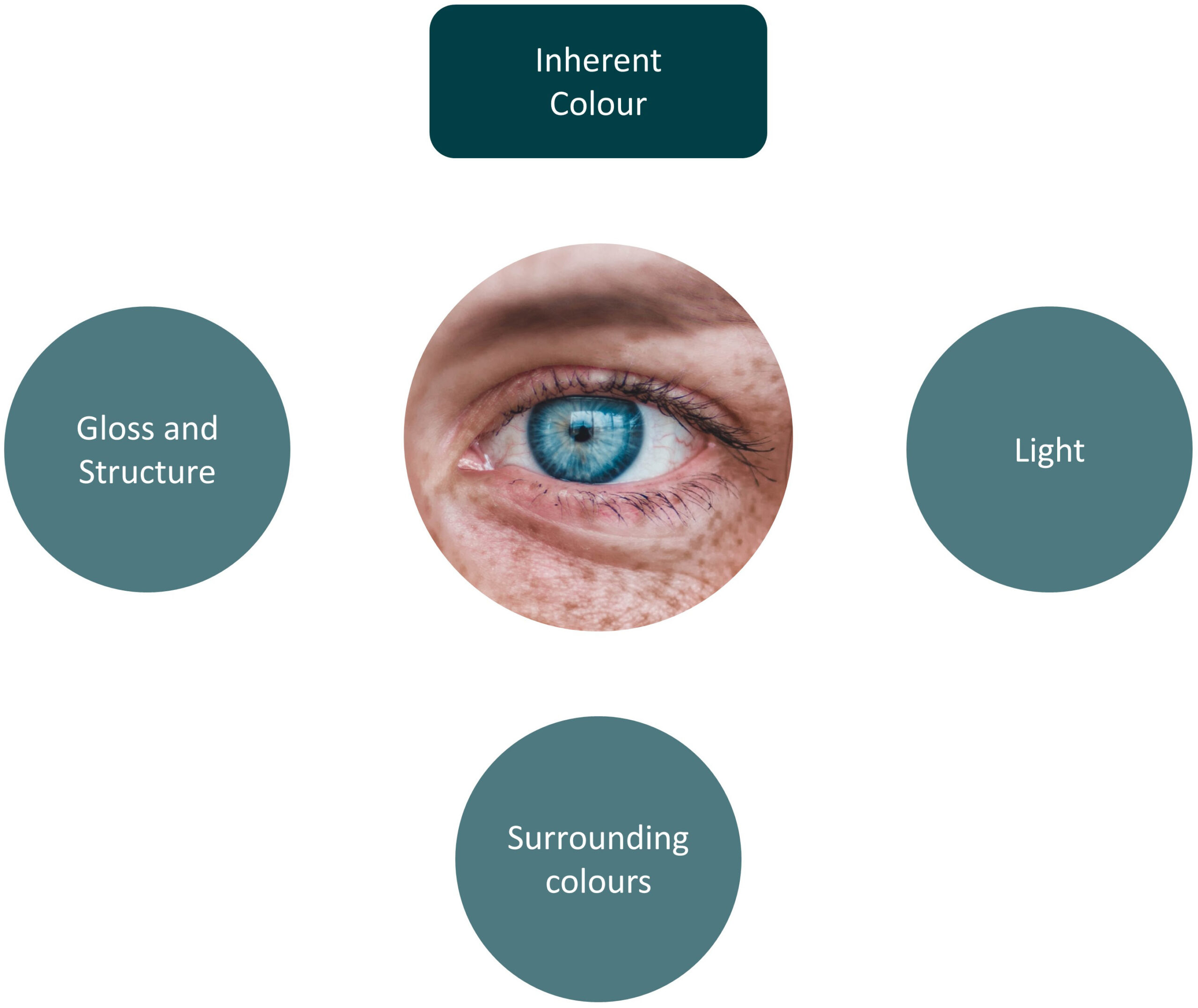Back to Course
19. NCS in kitchen studios II
0% Complete
0/0 Steps
Lesson 1 of 4
In Progress
Basic color design principles
Before we go into how colors change depending on different factors, you need to understand that there is a difference between inherent and perceived color.
Perceived color is what we see, and it can be affected by many factors. For example, light, surrounding, gloss, and structure. Inherent color, on the other hand, is the actual color, the measured color. As you can see in the small picture here, the stones have various colors. But they are perceived as a single color from a distance.
So, the actual color and what we see are two very different things.
Perceived color is what we see, and it can be affected by many factors. For example, light, surrounding, gloss, and structure. Inherent color, on the other hand, is the actual color, the measured color. As you can see in the small picture here, the stones have various colors. But they are perceived as a single color from a distance.
So, the actual color and what we see are two very different things.

Colors change depending on different factors, and those factors have different impacts on the change in relation to interior and exterior design. Here we present the basic factors to consider and in our advanced courses you will learn more in depth about these factors and learn how to manage them.
You are currently viewing a placeholder content from Vimeo. To access the actual content, click the button below. Please note that doing so will share data with third-party providers.
More Information

LIGHT
Without light there is no color – that is something we all can agree on, and that is why light is a part of the color design principles. When advising a client or creating a color design it is very important to understand how light will impact your color choices. Depending on the surface, the texture, the gloss and how the color is produced, the light will behave differently. This is important to understand. To be able to make the correct color decisions, we should always take the light in to account.
SURROUNDINGS
Since a color never exists alone, it is very important to understand the surrounding colors. Which colors can you change, and which colors do you need to consider in your color design? Therefore step 1 is always to measure the other colors in your space, or at least ask your client about them to achieve a better guidance.
Surrounding colors also play an important role at the beginning of a color choice, because while looking at a color sample in the store, the surroundings are different than where the color will be placed. Let us explain with a common occurrence in your daily work. You are advising your client on colors by looking at a blue color selection in the NCS Atlas/Index or similar. But even here you are not looking at one color only, even though you might think so… because next to your color are similar blue colors, with more/less chromaticness and more/less blackness. In this surrounding your color might look dull or very whiteish because your brain has something to compare with. Depending on what your brain is comparing to, your color will appear differently. In the picture below, you can see your blue color together with other colors, and the picture next to it is the same blue color, but with a different background.
Surrounding colors also play an important role at the beginning of a color choice, because while looking at a color sample in the store, the surroundings are different than where the color will be placed. Let us explain with a common occurrence in your daily work. You are advising your client on colors by looking at a blue color selection in the NCS Atlas/Index or similar. But even here you are not looking at one color only, even though you might think so… because next to your color are similar blue colors, with more/less chromaticness and more/less blackness. In this surrounding your color might look dull or very whiteish because your brain has something to compare with. Depending on what your brain is comparing to, your color will appear differently. In the picture below, you can see your blue color together with other colors, and the picture next to it is the same blue color, but with a different background.

GLOSS AND STRUCTURE
A color can change a lot depending on the surface. If the surface is glossy, matt, flat or structured will make the appearance of a color change a lot. In general, we can say that a glossy surface will look darker than a matt. Same applies for a structured surface in comparison to a flat surface.
